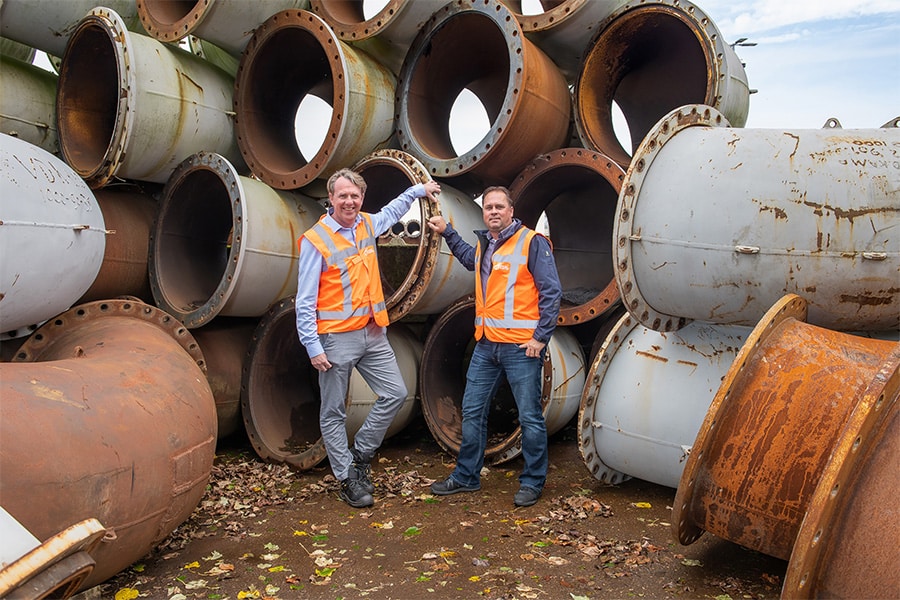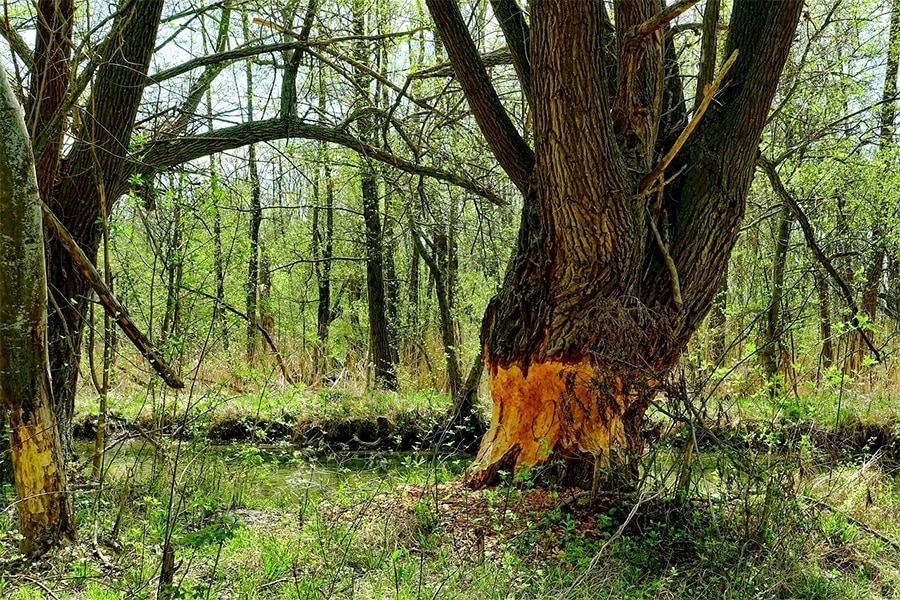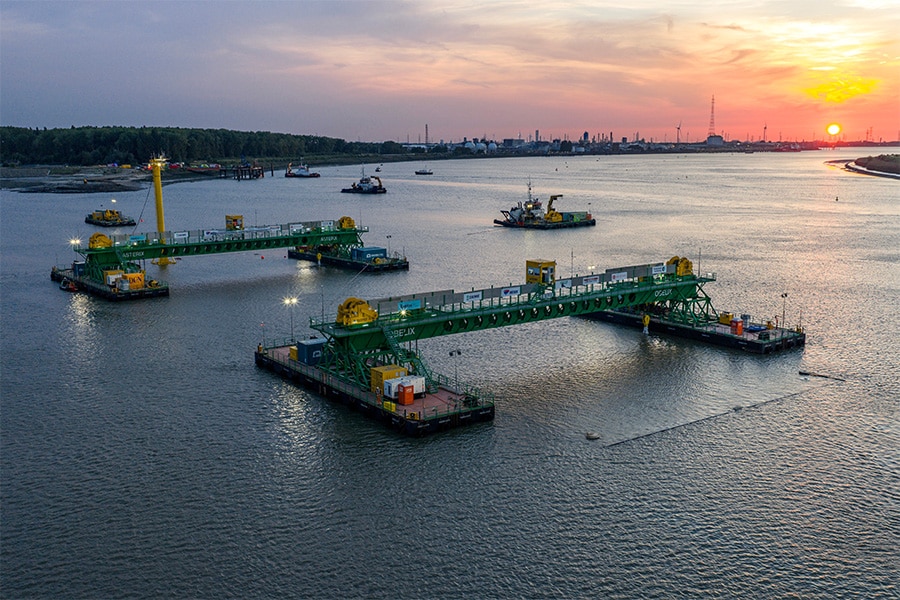
Van Aalsburg supplies and knots zinc pieces for bottom protection along the Afsluitdijk
Commissioned by construction consortium Levvel, which is carrying out the reinforcement and renewal work on behalf of the Department of Public Works, Van Aalsburg has supplied and knotted zinc pieces, which are used to protect the bottom profile around the Afsluitdijk. A zinc piece consists of bundles of willow twisted together and tied into mats in grid form.
Zinc pieces with geotextile
"Approximately 45,000 m2 of sinks were applied here to provide solid soil protection," says Dick van Aalsburg. "The zinc pieces applied here are made up of a cradle grid of two or three layers of cots, with a center-to-center distance of 1 meter. Underneath is a geotextile of PP60L and below that a nonwoven of 600 and 900 grams per m2. The addition of this heavy geotextile under sinkers has not been used before."

Thinking along in preliminary stages and during execution
Van Aalsburg's years of experience came in handy in the preliminary process and during execution. "We contributed ideas in advance on how many layers of crib sheets the structure of the sinker should consist of and what geotextile should be used. The construction was manufactured on the basis of drop tests carried out at the end of last year by knowledge platform CROW and Rijkswaterstaat and the resulting Erratum report. This way, we can be sure that the fabric is sturdy enough to prevent damage by the debris used. We then worked with Van Oord (part of construction consortium Levvel) to see how best to apply the zinc pieces for this particular project." Van Aalsburg made the laying plan for this; Van Oord handled the installation and sinking. This involved coupling the zinc pieces to a zinc beam and towing them to the correct position with a crane vessel. Using winches and sinker stones, the sinker is sunk to the bottom, where a layer of rock is then applied for stabilization.
Long-term protection
Zinc pieces have been made in a traditional manner for over a century and last for years, sometimes up to a hundred years. "That has been proven during excavations that Van Oord has done with Rijkswaterstaat at the Afsluitdijk," says Dick, explaining that this involved excavating classic zinc pieces (without geotextile) where the structure was still intact. The condition of the cradles, after they had been in function for a long time, was examined by SHR, test and knowledge partner of construction and construction-related products. "It is nice to protect nature with nature and to know that our crib structures are preserved for a long time," Dick says in conclusion.
Heeft u vragen over dit artikel, project of product?
Neem dan rechtstreeks contact op met Van Aalsburg BV.
 Contact opnemen
Contact opnemen




